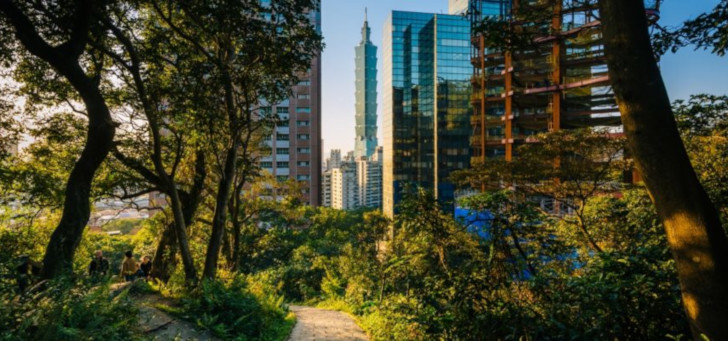Discover an effective urban reforestation method for communities!
The idea of planting woodlands in urban areas is slowly gaining ground. The ecological city of Lyon (France), which hosts the Paysalia show for landscaping professionals, has planted a 5.5 hectares forest on its city center (1) ! Although green cities understand the urgency of urban reforestation for the health of residents, they are however confronted with major difficulties in terms of time and space. An eco-city planning challenge met by ingenious landscaping professionals.

The idea of planting woodlands in urban areas is slowly gaining ground. The ecological city of Lyon (France), which hosts the Paysalia show for landscaping professionals, has planted a 5.5 hectares forest on its city center (1) ! Although green cities understand the urgency of urban reforestation for the health of residents, they are however confronted with major difficulties in terms of time and space. An eco-city planning challenge met by ingenious landscaping professionals.

An answer adapted to urban problems
All cities wanting to become more environmentally-friendly recognize the importance of the presence of trees in town planning. Trees certainly have very convincing benefits!
- They produce free wood, fruit and medicinal products.
- They control the temperature in small pockets of urban heat, improve air quality and collect rain water and even some pollutants.
- They support urban biodiversity.
- Last but not least, they play a social role since they directly impact the wellbeing of locals by creating emotion-filled landscapes.
However, the good resolutions of cities interested in urban reforestation run up a big obstacle. It takes time and the right space for trees to grow! So at first sight it is a Utopian dream to bring woodlands into cities - unless Man can “optimize nature”!
Where is the world at with reforestation projects?
Innovating ideas enabling green space creation
The famous botanist Akira Miyawaki considers that most existing forests in Japan were planted and are not the result of natural vegetation. An expert in vegetable ecology, he developed a truly pioneering method in this field (the “Miyawaki method”) and succeeded in restoring an indigenous forest on very degraded land, including in urban areas. The success of his method inspired others, including Shubhendu Sharma, formerly an industrial engineer with Toyota. He adapted and improved the Miyawaki method by adopting principles from the Toyota production line and presented his results in 2014 at a Ted conference.
His technique of urban reforestation, as in permaculture, consists in using all the horizontal and vertical space available, which makes it possible to grow forests in restricted zones in several “layers”. The soil in which the trees are planted is thoroughly analyzed so it can be amended with all the nutrients it needs, sometimes including micro-organisms like mycorrhizal fungi. Green spaces planned in this way are highly successful as:
- They grow 10 times more quickly than traditional forests, meeting urban area replanting urgency.
- They are 30 times denser, making it possible for even small plots to become efficient "green lungs".
- They are more resistant because the plants used are local.
- They attract a greater biodiversity.
6 other projects to track as they build green cities for tomorrow’s world
Positive productivity applied to nature has already been used to create over 100 forests in 9 different countries. To make green city accessible for the greatest number, Shubhendu Sharma set up the Afforestt company which proposes its methodology of urban reforestation in open source. It’s sure to work for you too!
(1) Le Progrès: Une "forêt" en projet tout au sud de la Presqu’île
Photo credit: © jonbilous / stock.adobe.com

